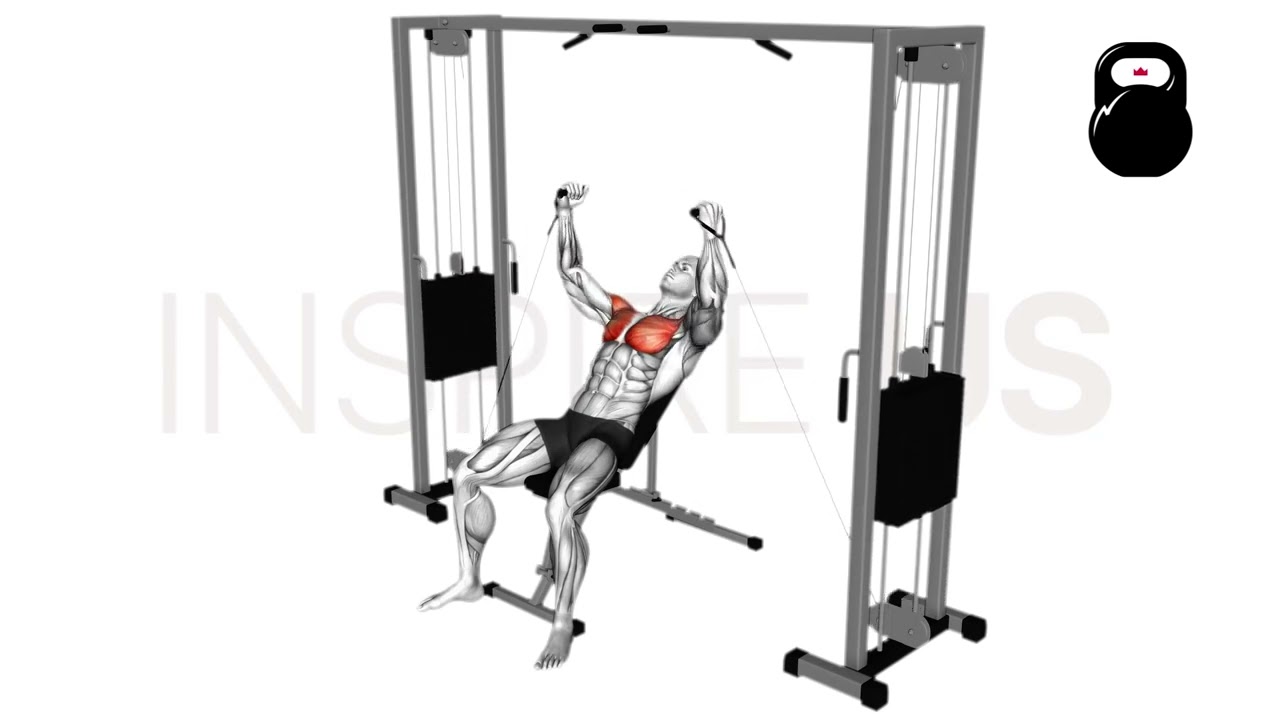Incline Bench Cable Fly: Muscles Worked and More
The incline bench cable fly is a variation of cable chest fly where the trunk is angled at an incline, maximizing pectoral muscle contraction and providing a more effective angle of resistance to the chest.
The incline cable fly is best used as an isolated mass-builder of the pectoral muscles, usually in high volume sets so as to maximize training effectiveness.
What are Incline Bench Cable Flys?
The incline bench chest fly is a machine-based isolation exercise involving arm adduction against resistance while in a lying position.
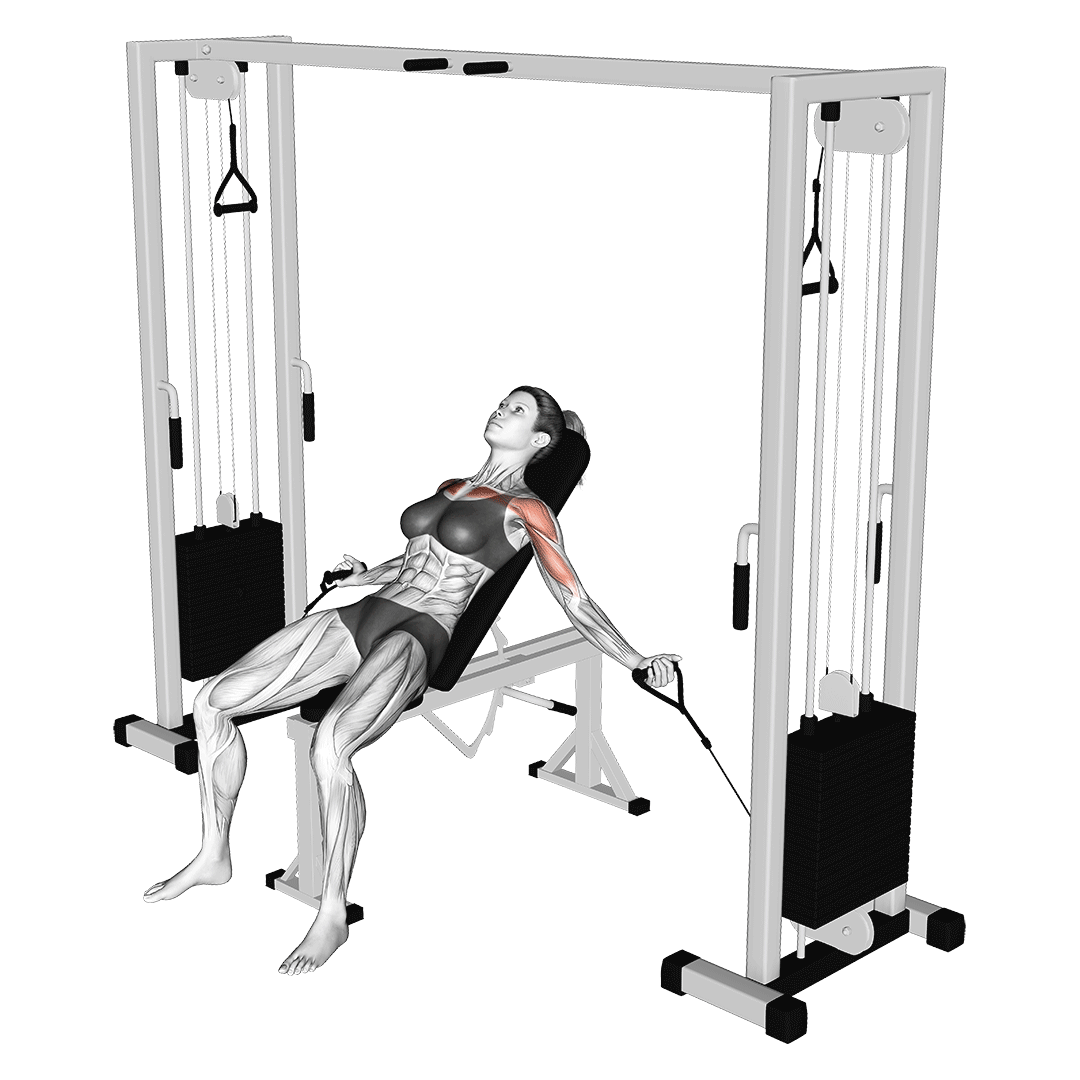
Its main purpose is to work the pectoral muscles through a full range, utilizing the constant tension of the cables for maximum hypertrophy.
In actual practice, the incline chest fly is most frequently placed near the end of a workout as a finishing accessory movement - often after heavier push exercises have already been completed.
Despite its rather equipment intensive requirements, the incline cable fly is actually quite simple and has a relatively low barrier of entry.
How to Do an Incline Bench Cable Fly
To perform a repetition of the incline bench cable fly, the lifter will begin by first placing an incline bench between two cable towers, angling it between 30 and 45 degrees from a horizontal position.
Attaching a pair of D handles to both cables, the lifter then lies atop the incline bench with their scapula pinned beneath them, reaching out to the sides and grasping the handles once securely positioned. A small arch in the lower back may be advantageous to reducing strain and maintaining proper form.
Keeping the arms straightened but with a slight bend in the elbows, the repetition begins with the lifter squeezing their pectorals and drawing their arms towards each other over the chest. The elbows should remain stationary as this occurs, with as little biceps involvement as possible.
Once the arms are vertically aligned over the chest, the concentric phase of the movement is complete.
At this point, the lifter allows the resistance of the cables to slowly pull their arms back to their sides, maintaining tension in the pectorals by controlling the descent of their arms.
Now back in the starting position, the repetition is considered to be complete.
Sets and Reps Recommendation:
As an isolation exercise with a considerably low risk of injury, incline cable flys are most effective when performed for moderate resistance and a higher volume of repetitions.
3-4 sets of 8-16 repetitions should suffice for developing pectoral muscle mass.
What Muscles are Worked by the Incline Cable Fly?
Incline cable flys are considered to be an isolation exercise, meaning that only one muscle group is meant to act as the principal focus of the movement.
This group, of course, is that of the pectorals - encompassing both the pectoralis minor and the pectoralis major muscles across the chest.
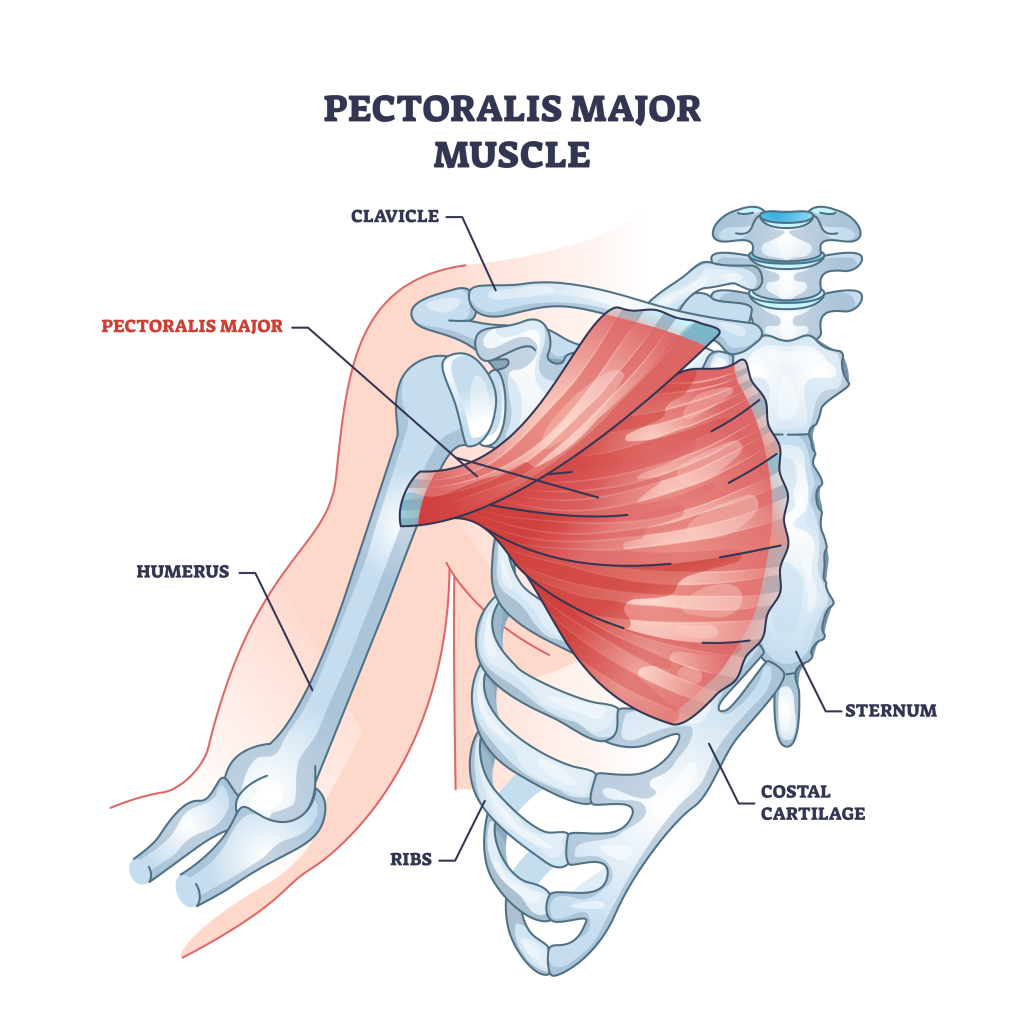
These muscles are mainly responsible for adduction of the arms towards the midline, of which is perfectly replicated by cable flys as a whole.
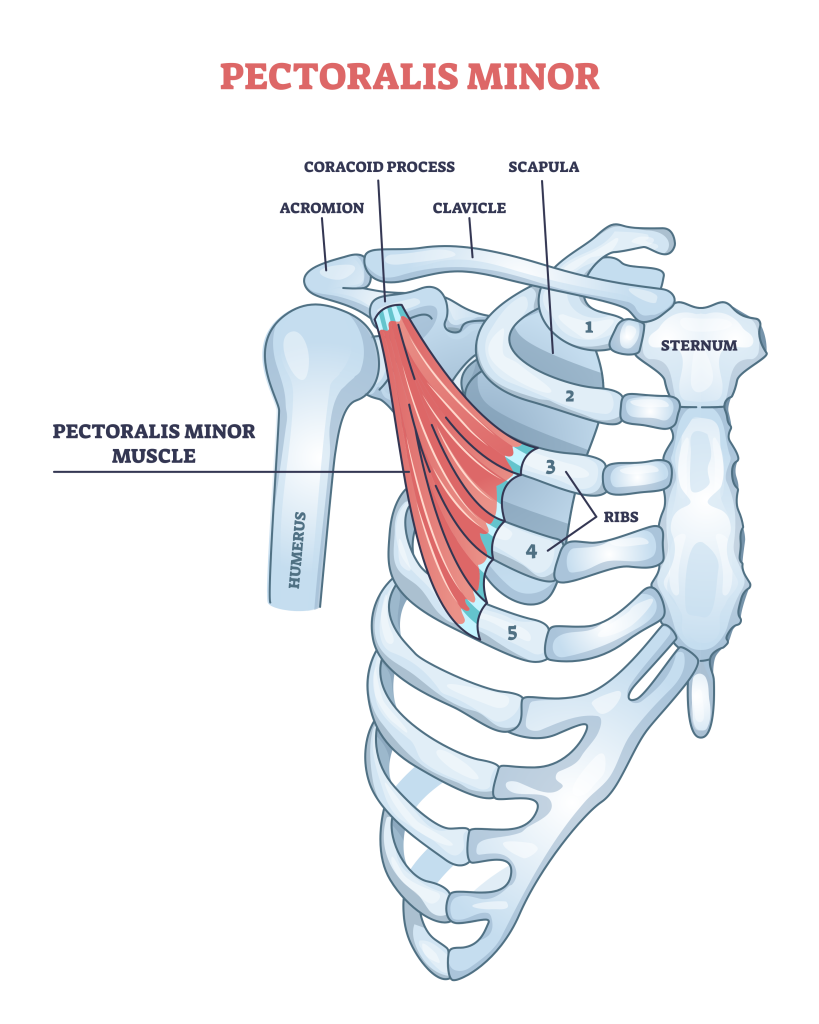
Alongside the pectoral muscles are the anterior deltoids, where they act in a stabilizing capacity to help keep the arms and shoulder joints in the right place as the pectoral muscles contract.
Common Incline Bench Chest Fly Mistakes to Avoid
Although a safe exercise, the incline bench chest fly must be performed with proper technique so as to maximize its effectiveness. Ensure none of the following highly common mistakes are present in your training.
Bending the Elbows Excessively or Locking Them Out
In order to avoid shifting emphasis away from the pectoral muscles, the incline cable fly should be performed with the arms as straight as possible without the elbows actually locking out.
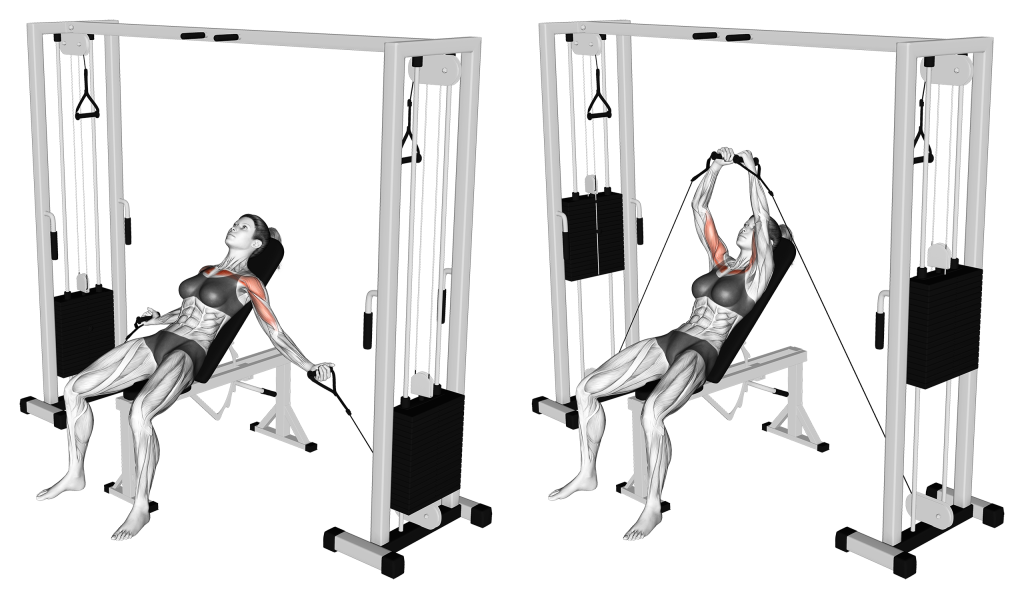
Bending the elbows to an excessive degree (as in the forearms nearly 90 degrees to the elbow) will contract the biceps and forearms, reducing how well the pectoral muscles are targeted.
Likewise, completely locking the elbows out can increase strain throughout the arms, shoulders and chest without necessarily creating any actual benefit as far as chest development goes.
For the ideal chest fly, the arms should be straightened with the elbows ever so slightly bent. Needing excessive elbow flexion to complete the repetition may spell out that you’re using too much weight - or suffer from poor pectoral tendon flexibility.
Insufficient Range of Motion
As is the case with practically all exercises, the incline cable fly must be performed with a full range of motion. Failing to complete a full ROM can lead to poor muscular development, the creation of sticking points and simply poor training stimulus as a whole.
Each repetition must begin and end with the upper arms at least parallel to the sides of the torso, if not somewhat behind so long as shoulder mobility allows.
Placing the upper arms in this position allows for the pectoral muscles to be stretched while under the tension of the cable, maximizing microscopic muscle fiber tears and thereby also muscle hypertrophy.
Apart from beginning and ending the repetition at the correct point, the top of the movement must also feature the upper arms at a 90 degree angle to the chest, just shy of the hands touching together over the trunk.
Protracting Scapula
In a similar vein to the chest press, the incline bench cable fly should also feature a fully retracted scapula.
Pinning the shoulder blades against the bench will help stabilize the entire upper body, as well as prevent strain of the shoulder girdle by accidentally protracting the scapula.
What’s more, the scapula being retracted will help lengthen the pectoral muscles at the start of the repetition, creating a greater opportunity for muscular gains.
A good cue to follow is to imagine pinching a small ball between the shoulder blades before lying back on the incline bench. Avoid hunching the shoulders up around the ears.
Rather, the shoulder blades should be pulled towards the middle of the back with the shoulders themselves rotated either externally or neutrally.
Poor Bench Position/Angle of Resistance
Less a technique mistake and more one of equipment set-up; ensure that the incline bench is positioned between 30 and 45 degrees from parallel to the floor.
Generally, the greater the degree of incline, the more the pectoralis major’s clavicular head and pectoralis minor are targeted.
Likewise, the bench should also between the cable towers, ensuring that the arms are pointing parallel to the weight stacks at the start of the repetition. Too far forwards or too far back will cause the cables to angle away from the chest, increasing shoulder strain and potentially emphasizing muscles other than the pecs.
Along a similar vein, the cable pulleys themselves must be positioned correctly as well.
An ideal line for the cable to form is one parallel to the arms but angled towards the floor - usually with the pulley adjusted near its lowest elevation. However, setting the pulley too low can require greater elbow flexion, leading to the aforementioned mistake of excessive elbow bending.
Apart from positioning the bench correctly, ensure the pulleys themselves also allow for the exercise to be performed with proper technique as well.
Variations and Alternatives to the Incline Bench Cable Fly
If the incline bench cable fly requires too much set-up for your liking - or isn’t hitting your chest from the right angle - try the following alternatives out.
Decline Bench Cable Flys
Just as there is an incline bench cable fly, so too is there a decline bench variant.
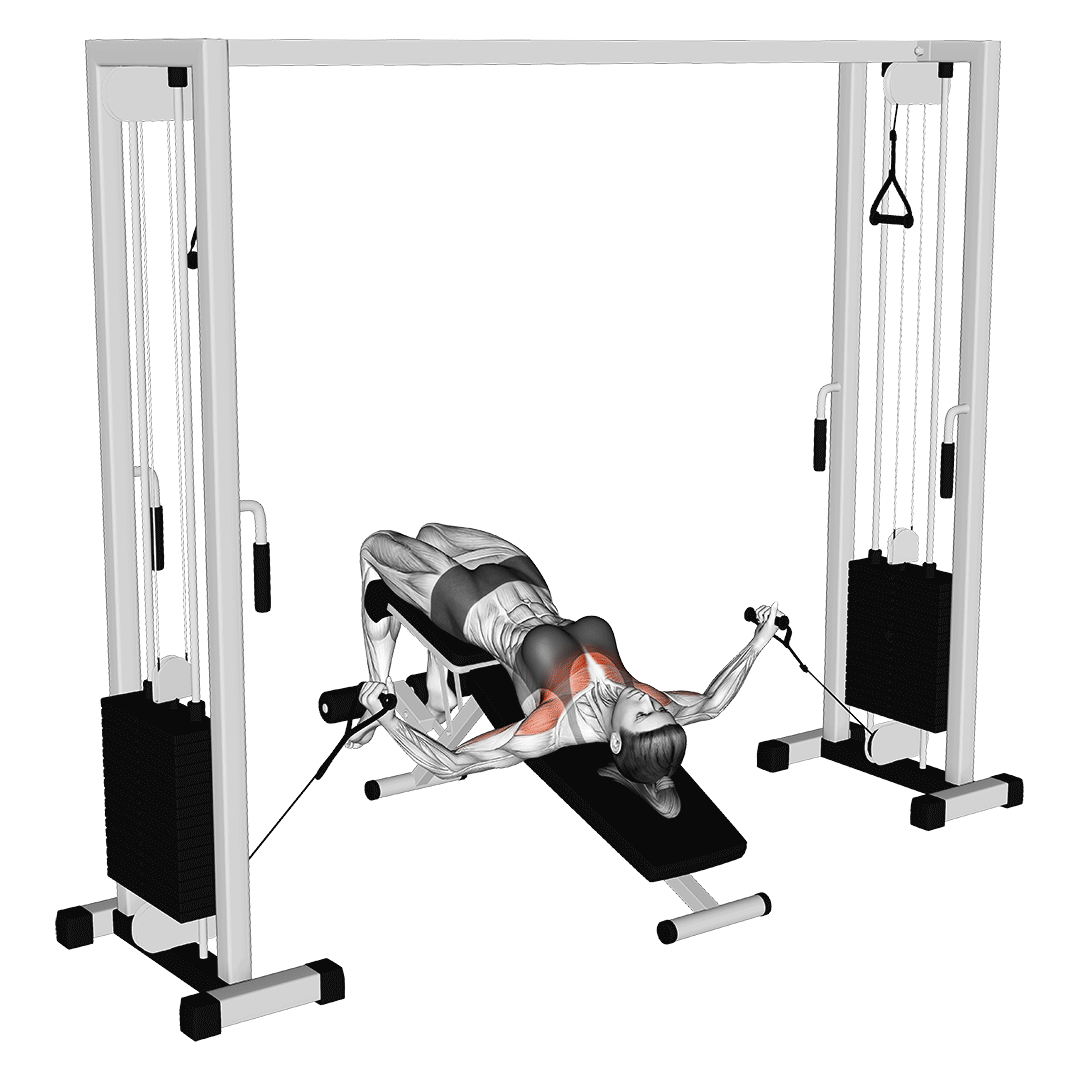
Unlike its incline counterpart, the decline bench fly creates far greater emphasis on the sternal (or lower) section of the pectoralis major, helping to produce a more pronounced chest and creating a carryover effect to horizontal pressing exercises.
Decline bench cable flys are best used as a substitute to the incline variant for lifters that lack lower chest definition. Otherwise, in terms of movement pattern or intensity, the two remain much the same.
Lying Cable Pullovers
The lying cable pullover is a unique compound movement targeting both the chest and the muscles of the upper back.
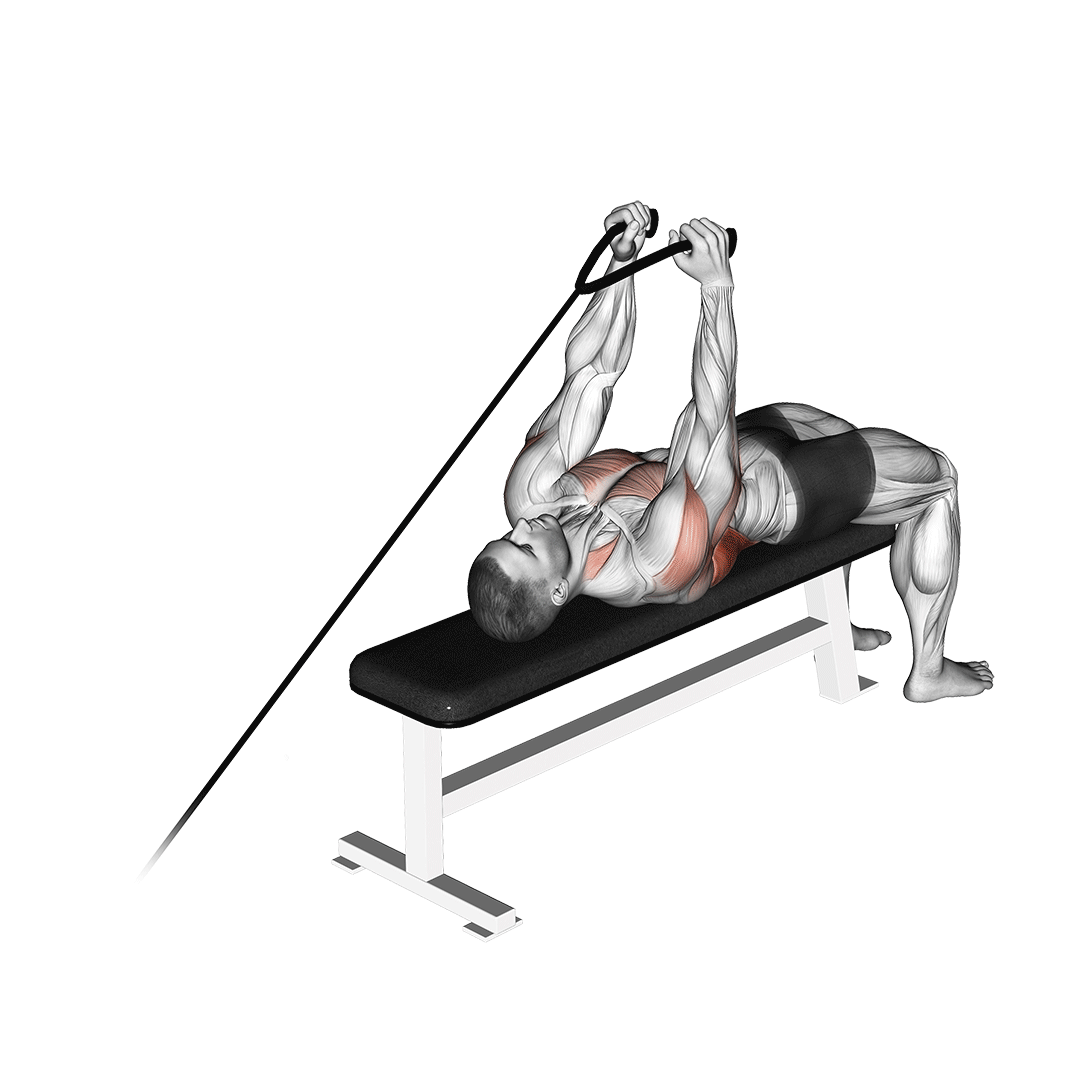
Despite this distinct difference in recruitment and movement pattern, the cable pullover and cable chest fly are similar in terms of the benefits they offer as chest exercises.
If performing a full body workout, lying cable pullovers may be used as a substitute exercise to save time and maximize workout tonnage.
Supinated Grip Incline Cable Flys
By adopting an underhand (palms up) wrist orientation, greater emphasis can be achieved on the sternal head of the pectoralis major.
While doing so does increase the risk of accidentally recruiting the elbow flexor muscles, so long as the elbow remains relatively straight, a supinated grip is perfectly effective.
Apart from greater emphasis on the lower chest, this variant and the conventional incline bench cable fly are otherwise the same and can be used interchangeably for greater exercise variation.
Frequently Asked Questions (FAQ)
What Angle is the Incline Cable Fly?
The incline cable fly should be performed between a 30 and 45 degree angle. Too low defeats the purpose of the exercise, while angling the upper body any higher may target the deltoids and biceps too much.
Is the Incline Cable Fly Push or Pull?
The incline cable fly primarily targets the pectoral muscles of the chest - of which are considered to be a “push” muscle owing to the angle of force they output.
As such, the incline cable fly is classified as a push exercise, even if no actual pushing is present in the movement pattern.
Is the Incline Bench Better Than Incline Flys?
Not necessarily.
The incline bench is a compound movement that will include muscles like the triceps brachii and anterior deltoid heads in its recruitment set, meaning that more energy is expended and there is somewhat less emphasis on the chest alone.
In comparison, incline chest flys are solely a pectoral-focused movement, targeting no other muscles to a remotely similar degree.
Both exercises serve their own unique purpose within a training program, and are not necessarily overall better than the other.
References
1. Schütz, Pascal, Pia Zimmer, Fabian Zeidler, Michael Plüss, Katja Oberhofer, Renate List, and Silvio Rene Lorenzetti. 2022. "Chest Exercises: Movement and Loading of Shoulder, Elbow and Wrist Joints" Sports 10, no. 2: 19. https://doi.org/10.3390/sports10020019
2. Haugen, M.E., Vårvik, F.T., Larsen, S. et al. Effect of free-weight vs. machine-based strength training on maximal strength, hypertrophy and jump performance – a systematic review and meta-analysis. BMC Sports Sci Med Rehabil 15, 103 (2023). https://doi.org/10.1186/s13102-023-00713-4
3. López-Vivancos, Abraham, Noelia González-Gálvez, Francisco Javier Orquín-Castrillón, Rodrigo Gomes de Souza Vale, and Pablo Jorge Marcos-Pardo. 2023. "Electromyographic Activity of the Pectoralis Major Muscle during Traditional Bench Press and Other Variants of Pectoral Exercises: A Systematic Review and Meta-Analysis" Applied Sciences 13, no. 8: 5203. https://doi.org/10.3390/app13085203

